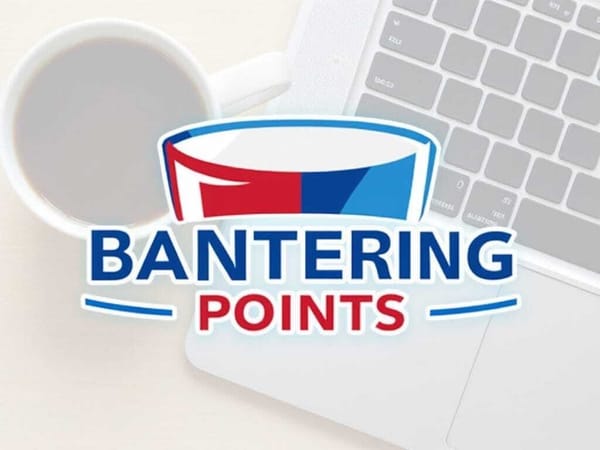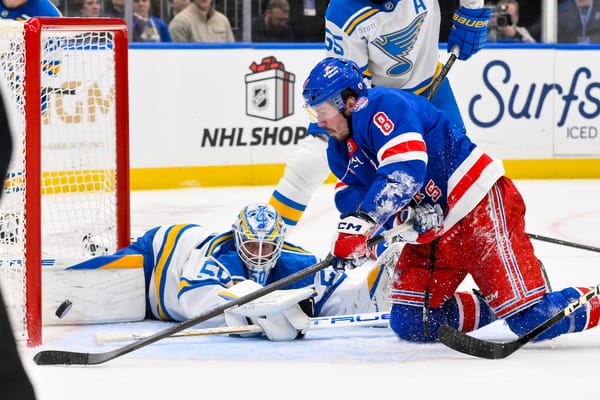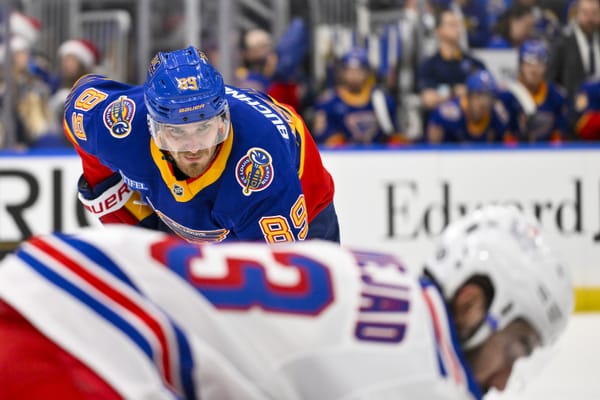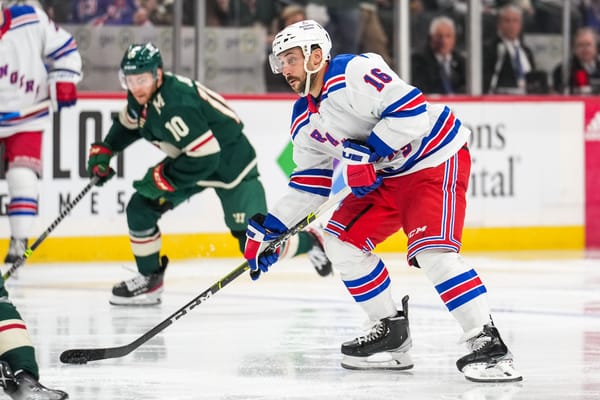New York Rangers Trades: Reviewing Jeff Gorton’s Moves
Summarizing the Rangers’ 2019 trading deadline and looking at at what is to come.
Now that the dust has started to settle, emotions — hopefully — have begun to get reeled back in, and we have a more clear picture of what’s going on. It’s time to review what the hell happened over the past few days.
The Mats Zuccarello trade market (more here)
Traded: Zuccarello
Return: a conditional 2019 2nd*, and a conditional 2020 3rd**
*If Dallas wins two playoff rounds and Zuccarello plays in 50% of their playoff games this selection becomes a 2019 1st
**If Zuccarello re-signs in Dallas this pick becomes a 2020 1st
It sucked. The returns across the board were relatively underwhelming, and I think it spoke volumes that the biggest fish in the pond (Mark Stone) didn’t even land a first round pick — even if he did fetch the far and away best prospect moved on the year.
I saw a lot of complaints about how Jeff Gorton is a bad general manager for not “negotiating” a better return for Mats Zuccarello. I understand the emotional level of that return not being good enough for what he meant to the organization, but it was market value. Gorton isn’t capable of magically creating trade partners and building up a bidding war. Holding off until Monday would have likely seen a worse deal come back his way as the team got more and more desperate to unload him. If you want to be mad at Gorton, be mad that he allowed the situation to fester until it became a “Zuccarello has to be traded because we’re not agreeing to a new contract with him.” But more on that in a bit.
When Gustav Nyquist went for a worse deal than Zuccarello (same picks, but Nyquist’s deal has one condition — where the 2020 3rd can become a 2020 2nd) it proved Gorton got the market value, or even slightly above. Again, if you want to be annoyed that was the underwhelming return on the table, that’s perfectly logical, but it’s not because Gorton accepted a worse deal than he was offered, or didn’t manage to “negotiate” more trade partners. That’s now how this works.
To me, once you enter the two weeks up to the trade deadline you’re a victim to the currents of the market. If it’s a seller’s market where there weren’t up to six prime UFA rentals hanging out in the open, we likely see a more “expected” return for Zuccarello. And at the end of the day, this is sort of the going rate for rentals of Zuccarello’s caliber:
Jiri Hudler returned a 2nd+4th round pick in 2016. Point totals 3 years prior to being traded:
— Stat Boy (@StatBoy_Steven) February 24, 2019
Hudler:
54 in 75
76 in 78
35 in 53
Zuccarello:
59 in 80
53 in 80
37 in 46
Is a 2nd+3rd (with conditions to turn into 1sts) really a bad return for Zuccarello? #NYR
The deal was fine. It wasn’t great (unless one of those conditions hits) but it was fine.
I’ve seen annoyance that Ryan Dzingel got more guaranteed in their deal than Zuccarello did, but that ignores Dzingel being 26 years old and willing to re-up in Columbus as soon as they’re ready to start talking. He’s also a goal scorer — 23 last year in 79 games last season and 22 in 57 games this season — and teams tend to pay for a scorer as opposed to a playmaker. Not everything is black and white, and that’s even more true during the two-week deadline window.
Prioritizing draft picks over prospects
It’s shocking that Gorton shipped out Zuccarello, Kevin Hayes, and Adam McQuaid and brought back one actual body in Brendan Lemieux (not counting temporary AHL filler Julius Bergman). It’s not a bad thing, it’s actually a pleasant surprise.
We’ve discussed this at length, but I will repeat it here: You’re always at an inherent disadvantage when trading for another team’s prospect. There’s generally a reason why these guys are being made available, and normally it comes in the form of red flags under the hood that you’d have no way of knowing about.
For a rebuilding team this represents a struggle: Do you go with guys who are more NHL ready but might have issues you don’t know about? Or do you go for draft picks where there’s a more clean slate, but sacrifice the timing of their impact to do so? For what the Rangers are trying to do, I agree with Gorton’s decision to go for picks over grade-B prospects. Assuming that no conditions on the Zuccarello deal are met, the Rangers will have two guaranteed 1st round picks this year, and three guaranteed 2nd round picks. If Dallas falls by the wayside with their injury issues, the Rangers could be looking at four selections in the first 45 draft slots. You want an opportunity to bring elite talent into the system that’s desperately lacking it? That’s one way to do so — especially if you prioritize upside as they did in 2018.
With no elite-level prospects on the market (aside from the Stone deal) this was probably the right more. It’s fair to assume Dallas had prospects on the table for Zuccarello that Gorton wasn’t fond of, so he elected to go for picks. Calgary was reportedly in on Hayes until the end, but might not have put a 1st on the table, or did with a prospect a tier below Lemieux. If that’s the case, good on Gorton for going with the picks and taking things into his own hands.
Lemieux and what his acquisition says about Gorton’s mindset (more here)
I wrote about Lemieux in some detail (linked above), and Adam did a further scouting report here. We also talked about him extensively on the podcast this week (Ep. 129) if you’re so inclined to listen.
Above I mentioned the fact that we can’t know what Gorton did or didn’t turn down, so this will a bit contradicting, but I will draw a line here. Nic Petan was moved to Toronto for a 27-year-old throwaway and had been on the market for weeks. The asking price was a mid-level pick according to some. I find it very hard to believe he would not have been made available for Hayes, especially since Lemieux somehow had league-wide interest once he became a New York Ranger.
Petan represents a different type of risk than Lemieux, but he also represents a much higher ceiling as well. Larry Brooks applauded the move for Lemieux as added “moxie” the Rangers now needed under David Quinn, and he wasn’t the only one. The Rangers shouldn’t be scolded for wanting to play this way, but generally their idea of how to make this work has been to get goons who can’t play hockey. Lemieux, hopefully, is one who can — and does have the potential to do so. That’s all well and good.
This specific deal isn’t a hill to die on, but it would be disappointing if Lemieux was prioritized over Petan. The Rangers are in a position where they need skill and talent wherever they can find it. Lemieux is a north-south hockey player who will go into the corners and crash the net, so there might be an on-ice component here as well, but I would hope the Rangers continue to push forward for skill over grit. In this instance it may or may not have been possible, but my gut is telling me Gorton prioritized Lemieux.
The defense is still a major problem (more here)
Adam McQuaid’s trade brought back a slight downgrade from what it cost the Rangers to get him, but it was an expected move that we had been waiting on for weeks. It cleared out a spot on the defense, but there are still seven bodies for six spots.
Fredrik Claesson saw his name get thrown around a lot, but nothing materialized on that front and he will remain a Ranger. Tony DeAngelo is on a seven-game point scoring streak and is becoming one of Quinn’s better defenseman — even earning outright praise from the head coach to the media. Neal Pionk — despite his massive, massive struggles — is still being used as a top-pair defenseman. Marc Staal isn’t going anywhere anytime soon, nor is Brady Skjei. My gut tells me Brendan Smith will be the odd man out more often than not, but it could be a rotation of sorts.
DeAngelo, Pionk, and Claesson are all RFAs at the end of the year. Keeping all three would mean Gorton would need to trade or buy out one of Smith, Skjei, Kevin Shattenkirk, or Staal — which probably isn’t going to happen. That decision is going to be an important one, since there’s a strange reputation that Pionk is this top pair guy that he just ... well ... look for yourself.
this is also fun. pic.twitter.com/K1smXscEqU
— Lundqvist was a 7th Rd pick!! (@RickNashtag) February 26, 2019
Speaking of ...
Summer decisions are coming
Defensive RFAs aside, there was play on a few players at the deadline that will probably resurface over the summer — namely Claesson and Vlad Namestnikov. But there’s other decisions that can and will likely be looked at here as well. Jimmy Vesey and Jesper Fast have term and could be of interest for a team who might be willing to overpay based on a reputation. Add Pionk in there as well. Ryan Stome could see some action, while Pavel Buchnevich and Lemieux need to be re-signed. There’s more coming this summer.
Gorton mentioned the Rangers aren’t ruling out using their assets to “speed up” the rebuild, but this can be a dangerous game to play. He specifically said he wasn’t necessarily talking about this summer, but the team is going to look at all options. Unless there’s an elite-level return out there — and even if there is — the Rangers are more than likely going to be a very bad team still next year. Spending assets to be slightly better isn’t smart business.
It’s also worth nothing we’ve heard from a few placed Gorton plans on being “active” in the RFA market. That’s another very dangerous game. The 2020 Draft looks to be one of the best in recent memory, and teams are protecting their 2020 picks like they are young children. Losing a 2020 first for an RFA compensation deal for a player who doesn’t move the needle much could be a catastrophic disaster — setting a rebuilding team back years if they miss out on a lottery slot because of it. Gorton needs to make sure that’s not a road he’s walking down.
The pipe dream of returning assets
When asked about re-signing Zuccarello this summer Gorton polity said Mats was a member of a different organization and he couldn’t speak to it.
It’s far to say Zuccarello and the Rangers have had friction with one another all year (another shameless plug for this week’s podcast but I did go into detail on this here), starting with Quinn not visiting him in Norway despite going to Sweden, and the fact that Gorton never really tried to keep him around. When the two sides finally sat down Zuccarello asked for a reasonable (for a starting point) five-year deal and talks stalled. The feeling from around the team was Zuccarello’s time in New York was done. For good.
This could be a ploy, or very good acting. It’s possible the two sides revisit things one another this summer to see if there’s a common ground — which should have been done months ago — but that would require some cooling down. If Dallas doesn’t keep Zuccarello then he’ll probably hit the market (I can’t see them recouping anything significant for his rights) and they can try again. If they keep him the Rangers get a coveted 2020 1st, there’s a few chances at making that right.
Hayes reportedly asked for a seven-year deal for $7-million per. That’s a lot of dough, but again, the two sides never really negotiated. TSN’s Darren Dreger seems to believe there’s a chance Hayes comes back, but it’s fair to say the numbers would need to be more agreeable to the Rangers than that, and there’s no reason why that offer or better wouldn’t exist on the open market.
Basically, I wouldn’t bet on it happening.
Thoughts on all this?





